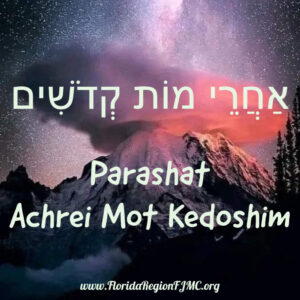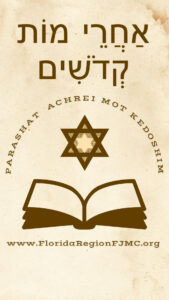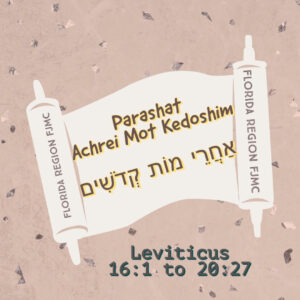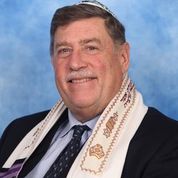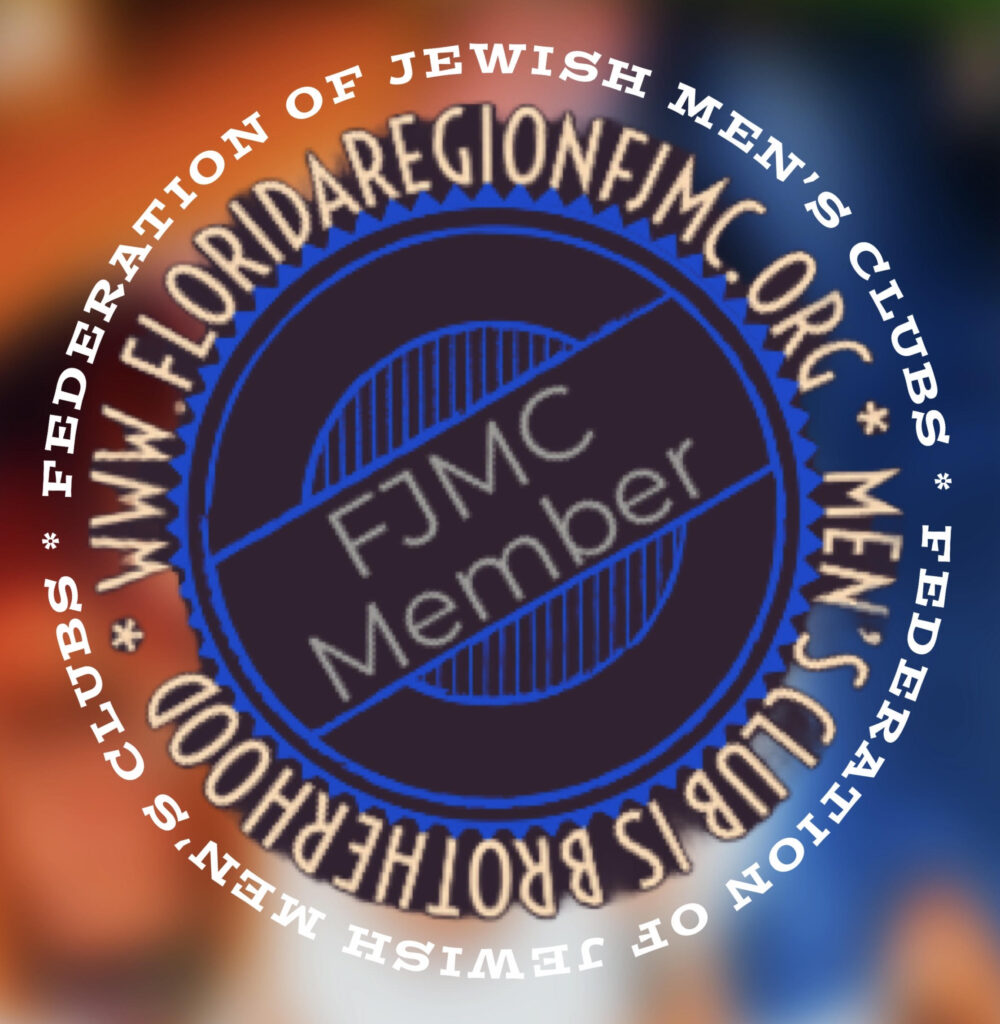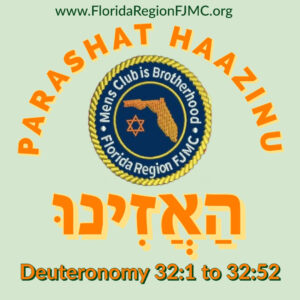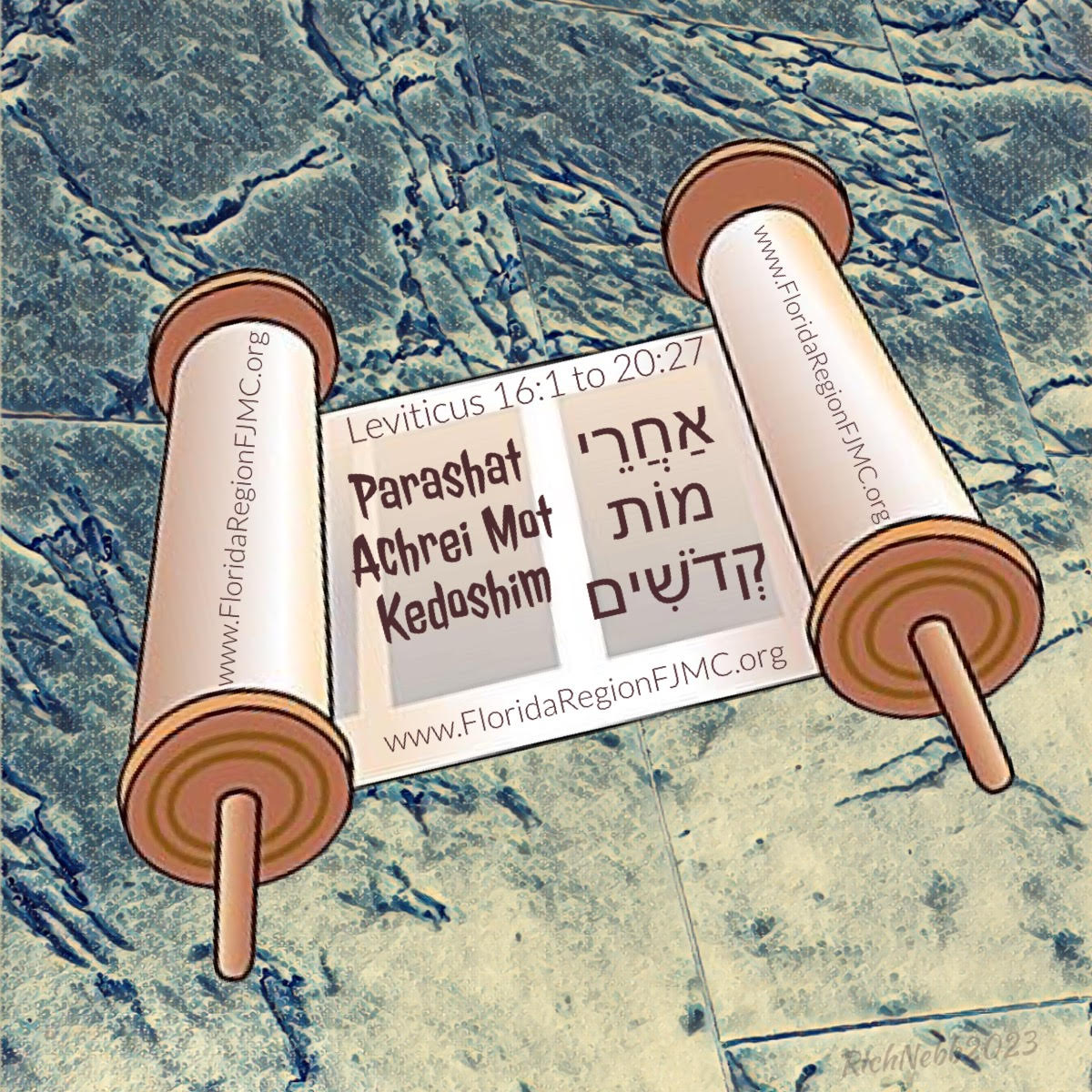
When you Choose Shabbat, you choose to learn that every Shabbat is different and special. This week we read from Parashat Achrei Mot and Kedoshim (אַחֲרֵי מוֹת קְדֹשִׁים), the 29th and 30th weekly Torah portions in the annual cycle of Torah readings.
This blessing of two Torah readings is due to the lunisolar Hebrew calendar which contains up to 55 weeks, the exact number varying between 50 in common years and 54 or 55 in leap years. According to Wikipedia, in leap years such as 2027, Parashat Achrei Mot read separately on the 29th Shabbat after Simchat Torah. In common years such as 2025, 2026 and 2028, Parashat Achrei Mot is combined with the next parashah, Kedoshim, to help achieve the number of weekly readings needed.
According to Wikipedia, Achrei Mot (אַחֲרֵי מוֹת ), Leviticus 16:1 through 18:30, contains 4,294 Hebrew letters, 1,170 words, 80 verses and makes up 154 lines of the Torah scroll and deals with the laws of Yom Kippor and centralized offerings, blood and sexual practices. In contrast, Kedoshim (קְדֹשִׁים), Leviticus 19:1 through 20;27, contains 3,229 Hebrew letters, 868 words, 64 verses and 109 lines of Torah. Kedoshim deals with the laws of holiness and ethical behavior, repeats the ten commandments and describes penalties for sexual transgression
Rabbi Michael D Klein of Temple Torat Emet offers his insights on this week’s double Torah reading, Achrei Mot Kedoshim for Shabbat May 10, 2025 aka 12 Iyar 575:
“Once again we are given a double header with so many topics that they cannot all be summarized with just one essay. Or can they?
The Sedra Achrei Mot begins by revisiting the tragic death of the two oldest sons of Aaron the High Priest. What follows, are the directions for the Kohen Gadol and the other Kohanim to follow for the expiation of their own sins and those of the House of Israel, which we read on the morning of Yom Kippur.
What’s the connection? Aaron’s two sons had reached the pinnacle of their success and yet, at that very moment, they succumbed to the temptation to offer “strange fire” on the altar which resulted in their demise. How often in life do we witness the spectacle of individuals who spend their lives toiling to reach their personal best only to fall victim to their own success.
Why does this occur? The answer is that many people fail to realize that their success is not entirely self-made. This failure to realize that G-d is their silent partner results in arrogance, hubris, haughtiness, excessive devotion to material goals over spiritual goals, failure to share, and ultimately, failure. Many people who achieve success lose focus because their goals are so self-centered. We witness this time and again in the entertainment industry, the sports arena, politics, and even among some religious leaders. The desire for praise and public adulation and the acquisition of more and more material goods eventually fades into the realization that unless we are willing to expand our scope to include and share our successes with others, meeting or exceeding our goals are not an end unto itself.
This is why the rest of the two sedrot focuses on holiness, “The Holiness Code“. According to the Torah, success is not only achieved by hard work and focus, it also depends on how we behave toward others. We can become selfish and self- centered and this results in Chillul Hashem-profaning the name of G-d because we fail to respect and share our G-d- given gifts with all.
Or, we can be Kiddush Hashem- acknowledging that our efforts are rewarded and our goals are significant only if we are willing to use them to heal the world. The choice is ours. Hopefully we
realize that true holiness is manifest when our goals match Yehi Ratzon- the will of G-d to make the world better for all. Thus, everything falls into place and our goals are synchronized with the Ribono Shel Olam-the Master and Creator of the Universe.
Questions to Consider:
- Which mitzvah is greater- observing Shabbat or honoring one’s parents? Which verse explains this answer.
- What are the practical applications of the prohibitions against putting a stumbling block before the blind or cursing the deaf?
- How do we know that the Mitzvah of observing Shabbat supersedes the mitzvah of building the Mishkan?
- Why does the Torah need to remind us of how to treat the righteous convert?
Rabbi Michael D. Klein attended Yeshiva College of South Florida and served as Torah Reader, Hebrew teacher, Chazzan and spiritual leader of various synagogues throughout South Florida. In January 2015 he became Ritual Director, Bnai/Bnot Mitzvah instructor and 7th grade Hebrew instructor for Temple Torat Emet of Boynton Beach. In October 2019 he was accepted into an accelerated track and received his smicha from Yeshiva Adath Wolkowisk and has been the Rabbinic leadership of Temple Torat Emet since August 2020. In September of 2022 he was appointed Rabbinic and Spiritual Advisor of the Florida Region of FJMC.
Choose Shabbat; choose to celebrate, to light candles, sing songs and learn a little Torah.
This moment of Jewish Learning is brought to you by the Florida Region of the Federation of Jewish Men’s Clubs (FJMC). We are part of a confederation of over 200 Jewish Men’s Clubs and Brotherhoods representing over 20,000 members across the United States, Canada, Latin America, and beyond. Learn more about how your Jewish Men’s Club or Brotherhood can affiliate with the FJMC at: https://www.fjmc.org/content/affiliating-fjmc.
The Florida Region of FJMC serves the needs of affiliated Men’s Clubs and Brotherhoods throughout the State of Florida. Get to know more about the FJMC Florida Region and our growing network of Jewish Men’s Clubs and Brotherhoods at www.floridaregionfjmc.org and please visit and LIKE our Florida Region FJMC Facebook Group at www.facebook.com/FloridaRegionFJMC.

